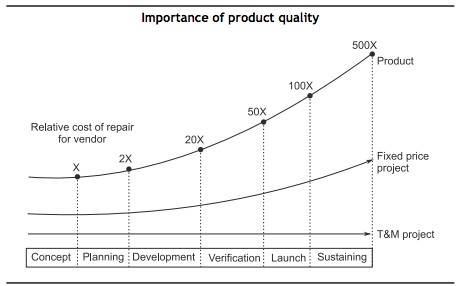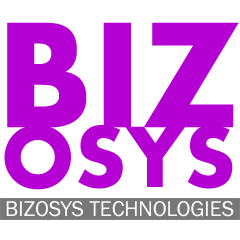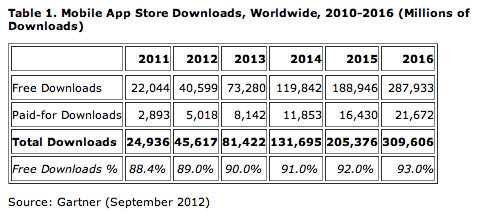Building products is hard. Building a successful product organization is even harder. Start-up ecosystem is replete with ideas and prototypes. Few of them reach the market with a product and very few turn up as successful. And, a minuscule number of product businesses are able to demonstrate sustainable success. While there could be many factors why this is such a hard thing to do, it boils down to the fact that building product business is full of paradoxes. A successful product business requires effective navigation through this paradoxical maze, especially early-on and through the first growth curve.
I believe there are five basic paradoxes of building successful product businesses. There could be more, but these are my five!
Paradox 1: Self-Conviction | Customer Voice
Customer Voice, Market Research, A/B Testing, Surveys have been the tools for marketers through the history of business. However, we have plenty of examples of successful products that no one thought anyone would ever buy. These Black Swans look possible in retrospect, transforming the lives of the people behind the product. Then, we have Steve Jobs who, with his combination of clarity, conviction & genius has openly declared over and over again, with successful products, that he knows better than the customers themselves about what they want.
It’s easy to think, egoistically, that one can do what Steve Jobs did. However, reality strikes everyday in form of a customer complaining about a feature. It’s a routine tussle between what the customers think they want against what the business is planning to build. Even a scientific, and algorithmic approach to getting the features weighted out before inclusion in the product lifecycle, is not guaranteed to get the customers what they want.
The best way to get this done is to test out the hypotheses of Feature preferences as quickly as possible. It is also important to dissect the Signal from the Noise in such feedback. Many times, product teams get disoriented based on the feature requests from “free” users due to sheer number of such demands. On the other hand, a handful of paid customers who provide you cash cannot be ignored. In case of Enterprise products, the early customer weigh in heavily on the way the product shapes out, sometimes very differently from what Product makers envisioned. This is where the conviction of one’s vision is critical and should be used as the yardstick for deciding what to build. One useful approach is to Invest energies into building frameworks that help ongoing experimentation possible to validate the user inclination. A rapid experimentation, prototyping approach backed by strong analytics is a great leverage for any product.
Paradox 2: Personal Branding | Company Branding | Product Branding | Product Promotion
At the face of it, this may look like a no-‐brainer. Any activity that the business performs toward Product Promotion would enhance the branding of the Product and hence the Company’s. And, a lot of business owners actually leverage their personal brand for the Product promotion and vice—versa. The problem is that a Promotional activity is targeted to the Lead Generation and Conversion, while any branding activity is targeted to an emotion of enhanced value or an emotion of relatedness in the minds of prospects & customers. It’s only in some cases that a promotional activity also does full service to the branding activity.
Even more difficult is to judge whether the efforts should be subjected to branding of employees, of the company, or of the product. Every day in the life of a business is replete with decisions to choose one over the other. And the right balance comes only with the long-‐term clarity & conviction around what’s important. In Consumer oriented products especially, the product brand becomes more important than the Company brand. The branding of people behind the product happens organically, if at all. However, in case of Enterprise Products, the Company Brand and credentials are critical, and so are the people behind the product. Hence, a distinct & precise decision has to be made very early on in terms of where the branding focus should be.
Paradox 3: Keeping Options Open | Focusing Efforts
We all know that every product should be envisioned with solving a specific problem for a specific and well-‐defined target segment. While that is true, the process to validate and revalidate the solution against this target segment is not straightforward, and there are multiple adjustments and adaptations that the product as well as it’s positioning may go through before hitting the so called “sweet spot”. In the process, through the experimentation and iterations, however, the tangential options may emerge. Any of these options, unless validated are only hypothetically promising. Such validations require effort, while the main product path requires fully focused effort & resources in order to ensure that any invalidation of the central idea is not due to the lack of effort.
We often get disillusioned by the examples of successful enterprises – most of them end up having done multiple things over time. What we forget is that very early-‐on, the success was a derivative of strong focus on one area. Diversification happens after the central business is profitable.
At the same time, one cannot spend infinite time & energy in validating an idea. As they always say “fail fast or succeed surely”!
Paradox 4: Technology | Marketing | Sales
It’s intriguing to note that most businesses, once the product creation really kicks off, end up getting sucked into the Product Lifecycle and Technology aspects while that actually is the time, the Marketing needs to kick in with the same intensity. Even more awkward situation that most entrepreneurs face is that by the time the product is ready for alpha or a beta, the pressure to generate cash forces them to leverage “sales” efforts instead of marketing.
In the last year or two I have met plenty of entrepreneurs with a single question: How do I generate cash quickly today so that I can continue to pursue the dream of building what I want to, for tomorrow? And this question seems to be independent of the amount of time the company has been in business. Of course, I have seen and met some who have balanced this beautifully by doing certain things in the starting phase of building the product as well as the company. The right balance of Marketing, Product Development, and Sales efforts is the key, and you can do that only by developing a team that can focus on these areas as you grow. A Super hero approach falters and fails, since time-‐slicing is not an option, it’s about parallel efforts.
Paradox 5: User Adoption | Cash Flow
There are going to be 45 billion App downloads from App Stores worldwide in 2012. Out of which, only 10% are going to be paid for. Out of the paid ones, 90% would have the price of $3 or less. With this ticket size, the marginal costs per user need to be drastically low. However, while this cost equation is easy to understand, more and more businesses are falling in trap of the Freemium model and burning cash and resources in the hope for another Heroku or Instagram. The examples of Twitter and Wikipedia, even though valid, sound misplaced to most businesses.
Any business needs to have a revenue model from day of inception. While, many companies got everything right and got a valuation for their efforts based on the user mass, we wouldn’t hear from people who close down the business and start off something else everyday. While there’s nothing wrong with the User Adoption game, cash flow is critical for the business. This cash could come in returns to the benefits any customers get or in returns to intangibles and futures that investors see for a while. But, a product eventually needs to be useful for customers that are ready to pay for it. Cash flow is what businesses need to run for, and that’s the number one priority that should drive the decisions in short term and long term.
PS: These are my five, I’m sure you’d have gone through many such decisions. Do you have any experiences that you can share?













